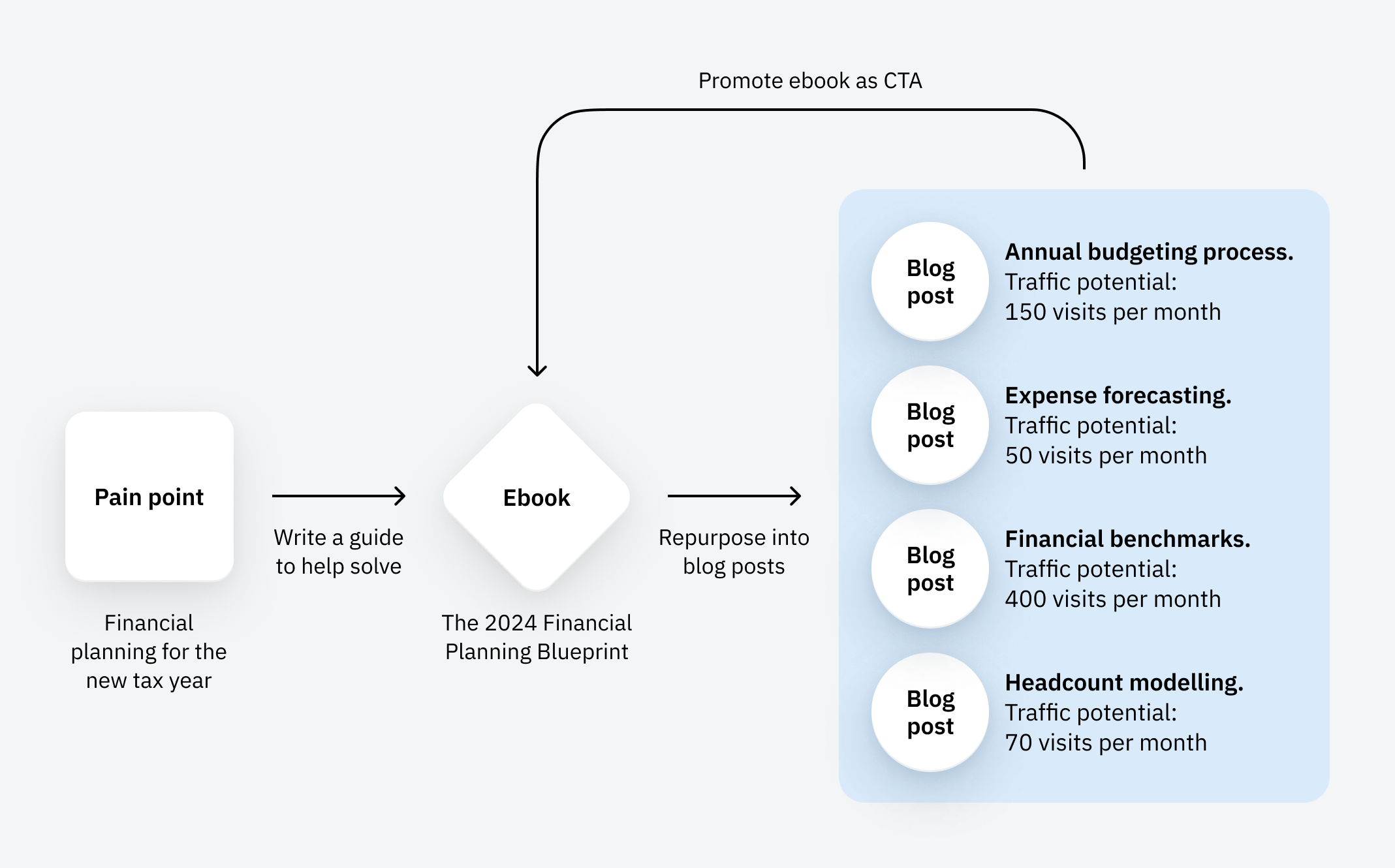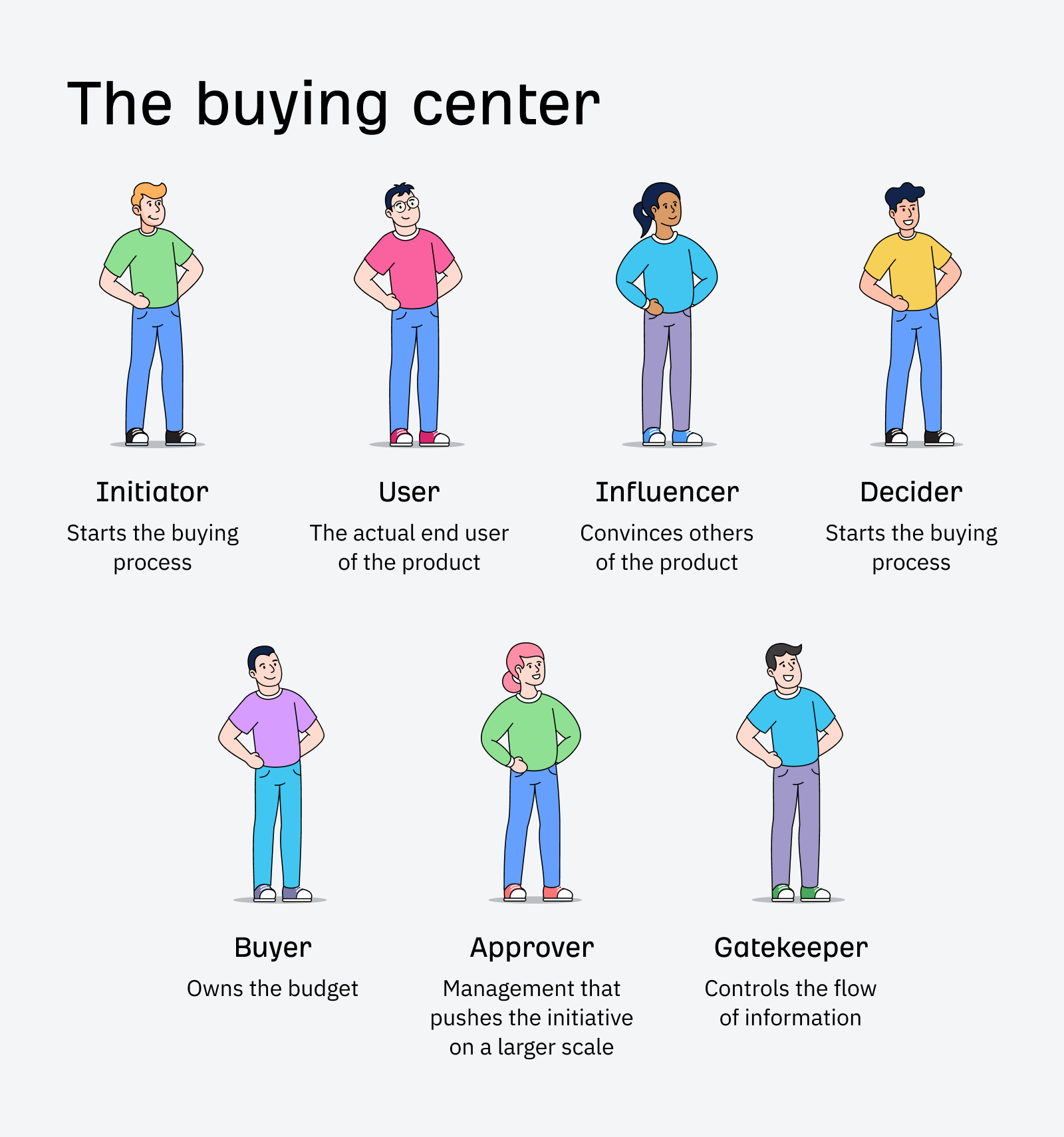B2B content marketing is creating content—blog posts, ebooks, videos, case studies—to attract and persuade all the people involved in buying something for a business. That means the person that will use your product or service, but also decision-makers and potential blockers, like the CEO or the legal team.
B2B content marketing is a bit like selling toys to a kid. Your first job is to get the kid excited, using flashy adverts to show them all the fun they can have, and the different ways they can use the toy.
But kids have no money, so you also need to persuade their parents to open their wallets. Parents care less about fun, and more about boring things like pricing, safety, and durability. Adverts alone won’t work: you need guarantees and safety manuals too.
To make the sale, you need to persuade on two fronts—but take too long, and the kid will forget all about you and buy something else instead.
2. Big deal sizes mean increased scrutiny
One of the perks of selling to a big business: you can charge lots of money. But that brings a downside, in the form of increased scrutiny. You’ll need to persuade would-be customers that your product works; that you have a track record of solving problems for similar companies; even that you’re better value than building something similar in-house.
4. Use gated content to turn visitors into leads
It can take months (or even years) for a new visitor to be ready and willing to make a purchase. To stay front of mind, B2B companies use gated content to turn anonymous visitors into contactable leads: offering access to books, whitepapers, or events in exchange for an email address.
Eliana and the Persefoni team created the Persefoni Academy, a series of free educational courses about carbon accounting and decarbonization. Joe at Mosaic.tech published a library of 17 ebooks, ranging from a SaaS metrics cheatsheet to a financial planning blueprint.
Joe thinks about ebooks as part of the bigger content strategy: a persona’s pain point is explored in an ebook, which is then repurposed into search-targeted blog posts, each with the ebook offered as gated content:

With an email address, you can keep in touch with leads: sending a regular newsletter, promoting your latest content; offering an email course, designed to teach a useful concept; or just sharing regular product updates.
There are also ways to stay front of mind without relying on email. Persefoni, Freshpaint, and Mosaic.tech all use retargeting: showing adverts to visitors once they’ve left the website. Eliana at Persefoni is also a big fan of content repurposing: taking an article, content download, or webinar, and sharing snippets from it across all the other channels a visitor might use:
“What surprised me the most is the number of touch points required to influence a successful sales opportunity. It was—spoiler alert—much more than I was imagining. It required more than just one content download, or one webinar registration: it was multiple touchpoints, across multiple channels, which really reinforced the importance of us having a sound holistic distribution strategy.”
Finally: track your performance to do more of what works (and less of what doesn’t). Across the companies we talked to, content marketing KPIs commonly fell into a handful of core categories:
- Website traffic (more traffic generally means more potential customers)
- Lead volume (the number of leads generated in a given period)
- Lead quality (leads become “sales-qualified” if the sales team believe a sale is possible)
- Weekly touchpoints (how frequently a lead is interacted with)
- Demo requests (more demos should mean more customers)
Final thoughts
B2B content marketing can sound complicated, but the core difference is a simple one: there are multiple people that can make (or break) a sale. Your content marketing needs to attract and persuade multiple people, each with different motivations and interests, and keep them interested over long periods of time.
It isn’t always easy, but the payoff is worthwhile: many B2B deals can run to hundreds of thousands (even millions) of dollars.
Content Copyrights Belong to The Author. All Rights Reserved.
We're A Dallas Digital Marketing Agency That is Experts At Social Media Marketing, Website Design and Emarketing and Promotion.




